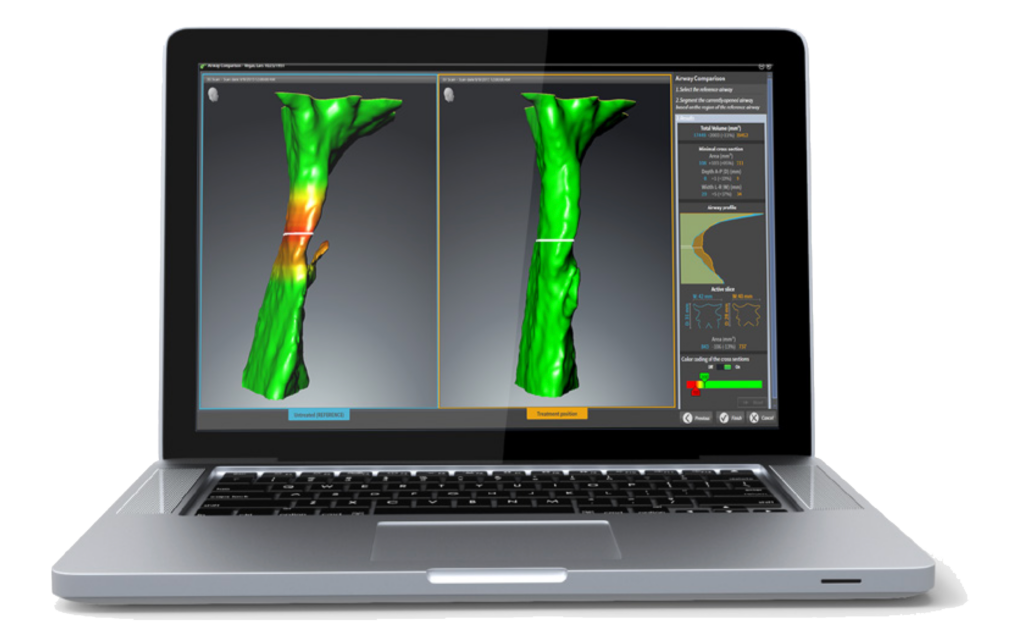Sleep medicine distinguishes between different stages and forms of snoring.
While simple snoring does not yet lead to respiratory arrest, obstructive sleep apnea syndrome (OSAS) causes the throat to collapse during sleep. This leads to a negative pressure, which temporarily blocks the upper airways completely. This can cause breathing to stop completely for a few seconds.
In central sleep apnea, the muscles of the ribs and diaphragm are not sufficiently activated – the result is breaths that are too few and not deep enough, leading to an undersupply of oxygen.

Examinations and diagnosis
Using targeted questions, we first elicit the patient’s medical history (any previous illnesses, medications, alcohol consumption, smoking). It is also important to shed light on the patient’s sleeping habits. If necessary, we include the patient’s partner in the questioning.
This is followed by a comprehensive examination with the main focus on nasal breathing, sinuses, pharynx, larynx, trachea and bite status.
Visualization and analysis of the upper airway in 3D
In our practice, we use a state-of-the-art software solution that enables visualization and analysis of the upper airway in 3D. Constrictions, all airway parameters and airway volume are mapped. The vivid representation clarifies the various therapy options.

Treatment options for obstructive sleep apnea
Change in lifestyle habits
Obesity, nicotine and alcohol consumption can be causes of sleep problems. Therefore, changes in lifestyle habits often show positive effects. Reducing body weight, for example, can mitigate the severity of apneas. But changing the sleeping position, treating allergies, and avoiding taking sedatives and sleeping pills before bedtime should also be considered.
Therapy splints
Therapy splints are a non-invasive solution. They are worn in the mouth by the patient during sleep and hold the lower jaw in a slightly advanced therapy position. This leads to widening of the airway and simultaneous activation of the muscles of the tongue and soft tissue.
Positive pressure ventilators
One measure for moderate to severe obstructive sleep apnea can be sleeping with a positive airway pressure (CPAP) device. This ensures that air flows steadily or intermittently into the sleeper’s throat, preventing airway collapse. However, the patient must sleep with a mask covering the nose, and sometimes the mouth.
Uvulo-Palato-Pharyngo-Plasty (UPPP) Surgery
The goal of surgery for obstructive sleep apnea is to widen the airway. In UPPP, parts of the pharynx are usually tightened and the obstructing portion is completely removed. The excessively soft, elongated palatal muscles and uvula are resected and shortened. This provides additional stability to the upper air passage, reduces snoring sounds, and keeps the airway open.
Approximately 80% of our patients diagnosed with obstructive sleep apnea show a significant improvement in quality of life with adequate therapy.